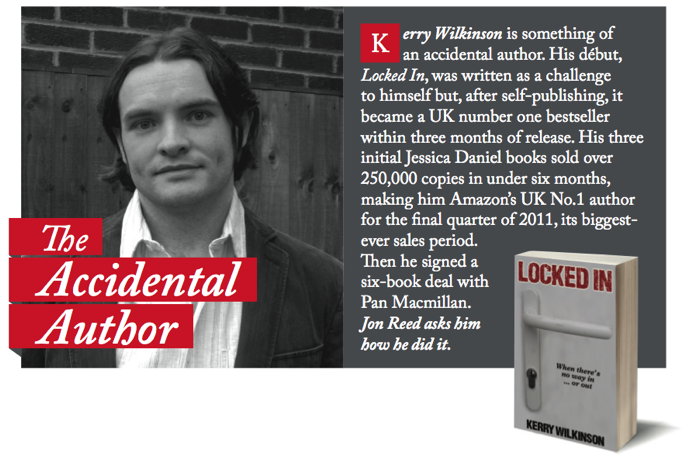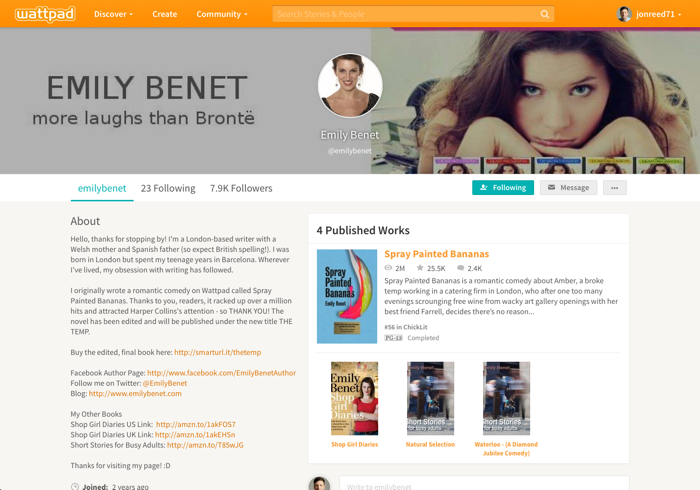Print on demand for self-published authors
Self-publishing is all about ebooks – right? Not always, says Anna Lewis, who explores the possibilities of print.
This article first appeared in issue 5 of Publishing Talk Magazine.
[rt_reading_time label="Reading Time:" postfix="minutes" postfix_singular="minute"]
Ebook sales are growing – what does that mean for self-publishers? You must be familiar with the typical self- publishing fairy tale that hits the headlines – an sells astronomical volumes of books and then gets snapped up by a big name publisher.
The ebook market has rocketed in recent years. In 2012 ebooks made up 20% of the consumer book market in the US and The Bookseller published a report which found that the ebook copies of Dan Brown’s Inferno accounted for 29% of its total copies sold, and for Sylvia Day’s bestselling romance novel Entwined With You ebooks made up 55%.
All this might lead you to think that self-publishing is now all about digital – but you’d be wrong. Print on demand is still very much in demand by self-publishers as it meets the needs of varied consumer and author preferences. Even where their digital counterparts are very popular, physical books still represent a huge proportion of copies sold. That comes down to something we all know: sometimes it just works out better to have a print copy.
Accurate statistics are hard to come by, as many self-published book sales may be made through channels other than those monitored by the data companies, but in the US it was estimated that last year print books made up for 63% of self-published book sales. Even if you take that as a ball-park figure, it’s clear that many independent authors and their audiences prefer print.
At CompletelyNovel we offer print on demand publishing directly to authors. Some of our customers use us alongside ebook publishing services such as Kindle Direct Publishing or Smashwords. Others have focused solely on creating a printed version of their book. If you want your book to be available in physical form, the advantage of print on demand is that you don’t have all the issues of set-up cost, inventory management, storage and distribution. The printers that we work with (Antony Rowe and Lightning Source) have put a huge amount of effort into making it economical to print just one book. But why print at all? Is print on demand something that you should consider? We’ve put together some examples of the kind of people it works for.
The printers that we work with (Antony Rowe and Lightning Source) have put a huge amount of effort into making it economical to print just one book. But why print at all? Is print on demand something that you should consider? We’ve put together some examples of the kind of people it works for.
What kind of writers choose print on demand?
Novelists
C. A. Hope wrote her novel New Lanark: Spinning New Lives to help bring to life the incredible achievements and stories of the people behind New Lanark Mills, a major tourist destination and UNESCO world heritage site. She published the book using CompletelyNovel and her book is stocked in the gift shop at New Lanark, as well as other local locations and on Amazon too. For Hope, having a physical product that people could pick up and take home with them was very important.
“I wanted to move my manuscript from script form to book form and produce a good quality product. CN’s services made this easy and I was very happy. Having published the book I could also present my work to publishers who were far more receptive; they could hold it in their hands and read it. I am a keen conservationist and cannot abide waste therefore Print on Demand is exactly the right way for me to publish hard copies of my novels.”
Business writers
For entrepreneurs, having a published book in your name can help hugely in establishing your credibility, differentiating you from your competitors and attracting clients. Using print can be particularly attractive as you have more freedom and control when it comes to using images, graphs and tables in your book, which might get mangled by the reflowable format of ebooks. There are other benefits to having a print version too.
Tom Evans is a life coach and works with a large number of clients helping them to find direction and inspiration in their careers and personal lives. Handing one of his books such as In The Zone to clients is a useful way of letting them digest the practices and principles in their own time. Print on demand means he can do that as efficiently as possible.
“Even though everyone seems to be using eReaders these days, print books have a place in this new world. At my talks and workshops, people still love having a personally signed copy my books. If I doing a talk for 23 people, I know that I can order exactly 23 books at no cost penalty and they will be delivered within 5 days, sometimes in two!”
Autobiographers
Christian Paris penned A Pretty Smart Way To Catch A Lobster (The Alice In Wonderland Years) to tell the story of how he was inspired to start a club and the many adventures he had in the ten years that the club ran for. There’s a large group of people who remember the club and may also have been part of the various weird and wonderful projects that Christian ran alongside it. Having a printed book was a way of saving and sharing those memories with that group of people.
“After spending many years writing my first book I attempted to find a publisher. Due to the specialist nature of my book I became very accustomed to the standard ‘thanks but no thanks’ letters arriving in my post box. Never being one to give up I was determined to find a way.
I thought about publishing my story as an ebook and then somebody told me about CompletelyNovel. I downloaded and uploaded as directed by the website one Sunday and two days later the first sample copy arrived! I was impressed by the professional quality of the printing, the cover and the binding and also the speediness of its arrival. To me a book has to be held, to be touched, to turn over, to read the blurb on the back and to take a sneaky look at the pictures inside, before settling down and reading it. Once read it can be lent to others and then to be treasured.”
Travel writers
Crossing Europe on a Bike Called Reggie was written by Andrew Sykes, a keen cyclist. It has been a highly successful book among other travellers and cyclists both in terms of ebook sales and print sales. Here’s why he opted for print:
“Selling ebooks is great but to actually see your literary effort in a printed book is something quite special. Apart from that initial wish, it obviously opens up the books to more traditional markets and has allowed me to get the books into around 100 Waterstone’s stores nationwide as well as being sold through online channels such as Amazon. Many people prefer (for very good reasons) having a book in their hand to hold, to bend, to lay down on the floor, to put on their coffee table, to throw at the cat! You can’t really do that with an ebook.”
So…what does your audience want?
The core question you need to ask yourself when deciding whether to opt for publishing with print on demand is why am I publishing, and what does my audience want? Think about who’s going to buy this book, which format is going to suit them best, and how you can achieve your goals.
Top tips for self-publishing using print on demand
If you do choose to publish your book in print – here are some tips on how to get the most out of the experience.
- Spend as much time on your cover as you can. Your cover is the reader’s first impression and one which will last so don’t treat it as an afterthought. Remember that book covers are not simply art or design – they are packaging. They have to portray a strong message of what’s behind them.
- There are tools to make self- publishing easier, but it’s never an easy option. The difference between traditional publishing and self-publishing is rather like the difference between working for a company and starting your own business. Online self-publishing services can take away the technical pain and upfront cost, but to be successful you need to put your business hat on and get out of your comfort zone.
- Give yourself enough time. Large publishing houses will often take a year or more to publish a book. You don’t need to take this long, but you shouldn’t underestimate the time needed. Don’t give yourself one week before your book launch to get your book printed! If you force yourself into a very tight time frame there are a lot of corners that you may have to cut.
- Keep things simple to save time and money. The more bespoke you try and go, the more you will limit yourself in terms of the services you use, and the higher your costs will be. Even deciding that you want a hardback or colour pages can end up making your book much more expensive to print and produce. Consider starting with something simple while you establish whether there is demand.
- If you want to grow your audience, you need to market your book. If you only want to reach certain people who you already know (such as the members of a group, or your clients) then your marketing is pretty straightforward: simply hand over a book to those people. If you want to grow your audience then it’s worth taking note of the rule in advertising that says that for you to remember something, you have to hear it at least seven times. Publishing Talk can offer lots of online marketing advice. Soak it all up and use it!


